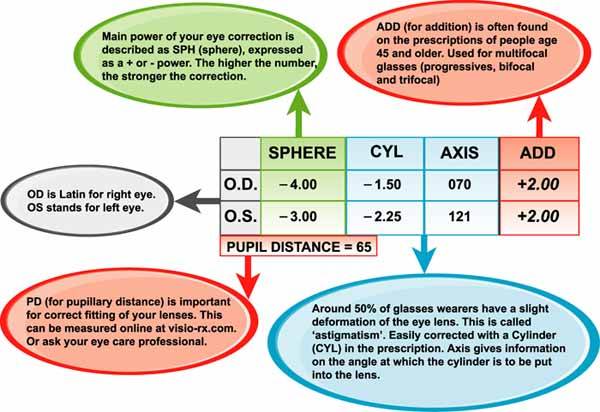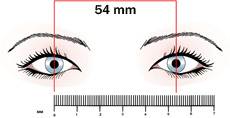If your eyes were measured by a licensed optometrist or optician, they are required by law to provide you a complete written prescription. Once you get your prescription, here's how you read it:

Trouverez plus d'informations sur la façon de lire votre ordonnance ici.
No, you cannot. Because a contact lens prescription is written for corrective lenses that are put into your eye, it makes the strength of the prescription different than what is used for an eyeglass that sits a short distance away from your eyeball.
Contact your eyecare provider to obtain a proper eyeglasses prescription.
 |
|
Pupillary distance (PD) is the distance between your pupils.
|
Pupillary distance, or PD, is the distance between your pupils when looking straight ahead. This is a necessary measurement for glasses to put the optical center of the lens right in front of your pupils, making the glasses comfortable and natural to wear. During your normal eye exam, you can ask your doctor to measure your PD and to provide it on your prescription. Once you obtain this measurement as an adult, it will never change.
In case your prescription does not have the PD on it, most optical shops have a device with which they can measure your PD. This takes only one minute, and customer oriented shops will do this as a free service, or charge a small fee.
So what do you do if your eye doctor has not provided this measurement on your prescription and/or refuses to give this to you? There are 3 solutions, only 2 of which we recommend. You can use our free online PD meter (recommended), rent a PD meter from us (recommended), or use a ruler (not recommended).
To read more on these solutions and to use our online PD meter, click here.
The general recommendation is that you get your eyes checked every 2 years. However, if you start noticing changes in your vision before that time is up, get to the doctor as soon as possible. You only have 2 eyes, take care of them.

